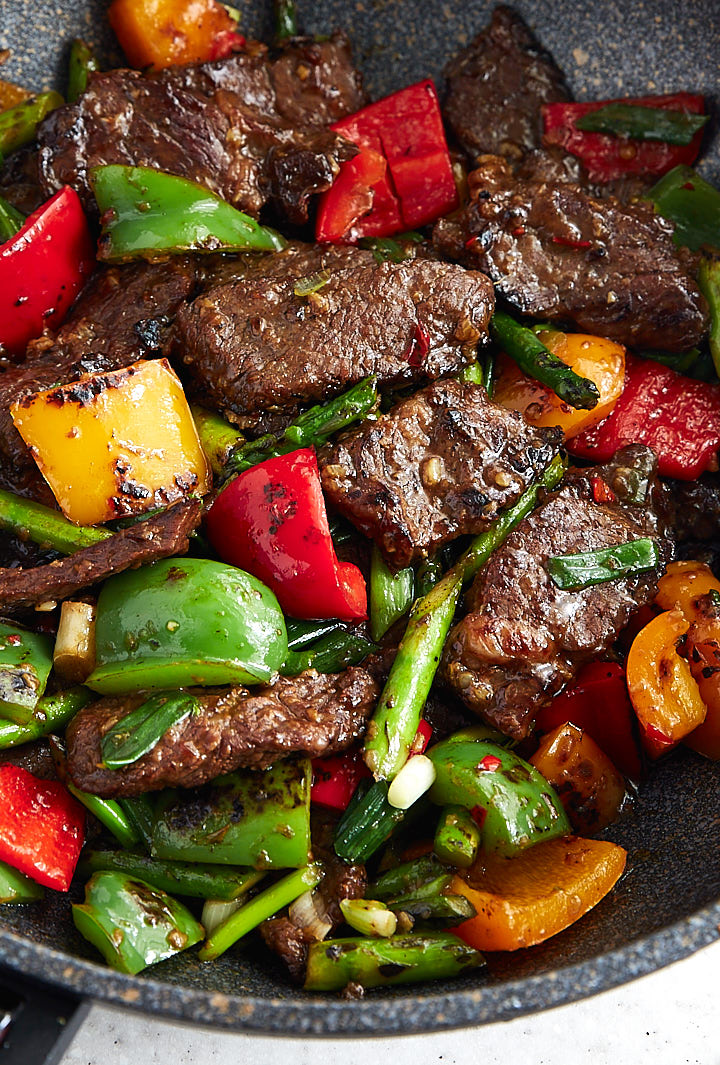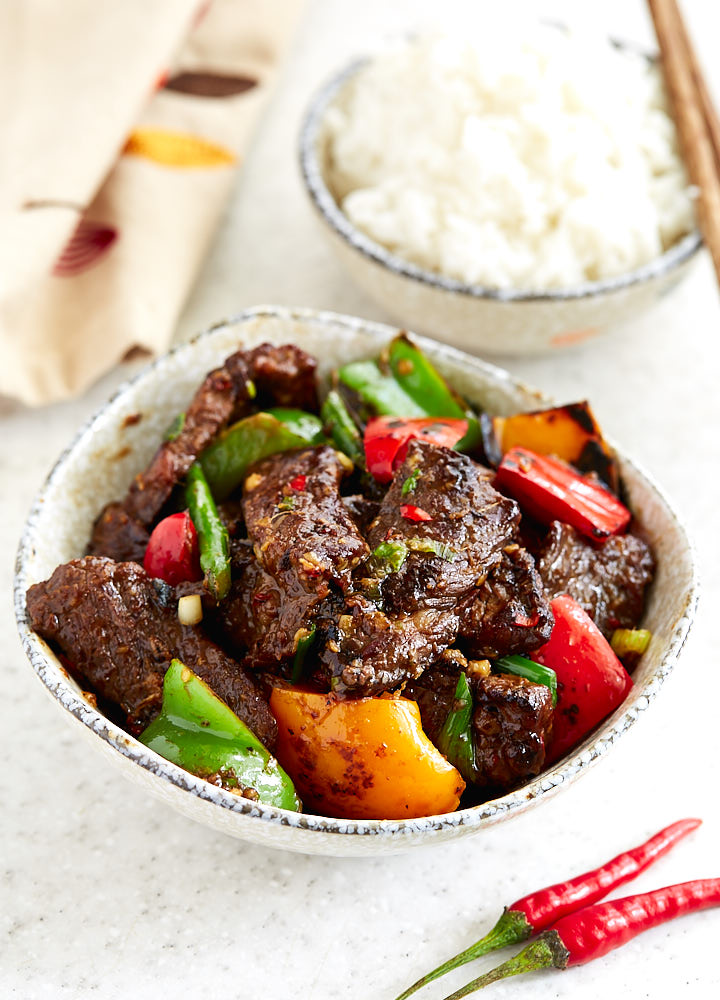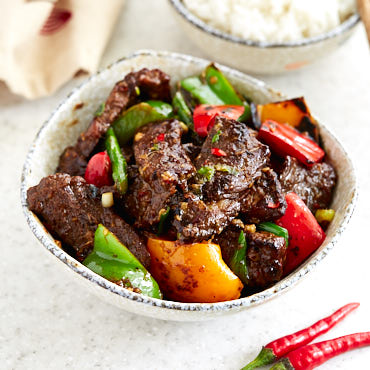This Hunan beef stir-fry is pleasantly spicy and deeply flavorful. Deep-fried beef is beautifully browned, flavorful and very tender on the inside. Bell peppers and asparagus add a welcome contrast to the tender meat and make the dish more balanced and exciting. I used to equate Chinese food to Chinese take-out or the ‘mall Asian food’, you know, the kind they serve at your local mall’s food court. What a huge mistake that was! You’ll be hard-pressed to find similarly overly salty, sugary, over-sauced and greasy Asian food among authentic Asian dishes. They say ethnic foods are adapted to local tastes. I think adaptation of Chinese food went a little too far and a lot of its character and rich flavors, sadly, got lost in translation. Try this Hunan beef and you’ll know what I am talking about. You won’t be able to find anything like it at a Chinese take-out place or at a mall. And it’s super simple to make. Fast, easy and super delicious is how I would describe it.
How to make Hunan Beef
Preparation of Hunan beef involves a classic Chinese technique known as ‘shallow frying’, where you deep-fry meat in a small quantity of oil to partially cook it and set the cornstarch coating before stir-frying. Deep-frying really helps make the meat come out tender on the inside. Additionally, with shallow frying you also need to use a lot less oil, which is very welcome considering that peanut oil is expensive. Like, really expensive. Can you use even less oil than is indicated in the recipe? Probably. As long as the meat is fully submerged in oil you will be fine. You’ll just need to fry the meat in smaller batches.
How spicy should Hunan beef be?
Traditionally, Hunan and Szechuan dishes, like the Szechuan Chicken I recently posted about, are very hot and spicy. While westerners believe that hot food numbs the palate and prevents it from experiencing the full range of flavors, Chinese maintain that spicy food helps the palate open up and appreciate a wider range flavors. In the recipe, I specified how to achieve various levels of heat. So, start with mild, then work your way up. You may be surprised.
Enhancing the dish
Finally, bell peppers and asparagus are not traditional ingredients in this dish, but I love how they enhance the dish. You can substitute them for any other vegetables you like.


